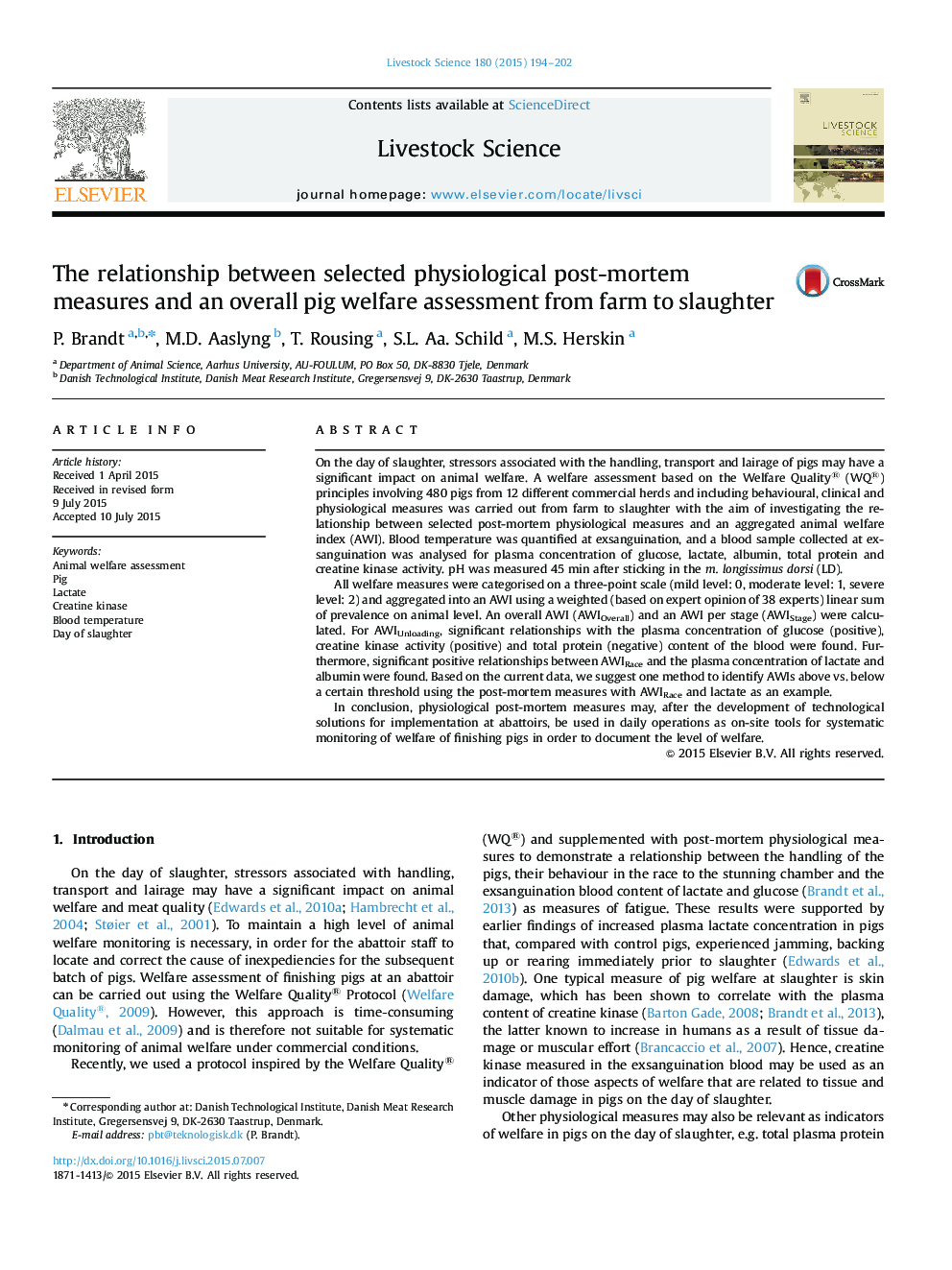| Article ID | Journal | Published Year | Pages | File Type |
|---|---|---|---|---|
| 2447040 | Livestock Science | 2015 | 9 Pages |
•Animal welfare of finishing pigs was assessed at six stages on the day of slaughter.•An aggregated animal welfare index (AWI) was calculated.•A significant relationship between AWI in the race to stunning and exsanguination plasma lactate was found.•Lactate and creatine kinase may be promising as online indicators of welfare for documentation.
On the day of slaughter, stressors associated with the handling, transport and lairage of pigs may have a significant impact on animal welfare. A welfare assessment based on the Welfare Quality® (WQ®) principles involving 480 pigs from 12 different commercial herds and including behavioural, clinical and physiological measures was carried out from farm to slaughter with the aim of investigating the relationship between selected post-mortem physiological measures and an aggregated animal welfare index (AWI). Blood temperature was quantified at exsanguination, and a blood sample collected at exsanguination was analysed for plasma concentration of glucose, lactate, albumin, total protein and creatine kinase activity. pH was measured 45 min after sticking in the m. longissimus dorsi (LD).All welfare measures were categorised on a three-point scale (mild level: 0, moderate level: 1, severe level: 2) and aggregated into an AWI using a weighted (based on expert opinion of 38 experts) linear sum of prevalence on animal level. An overall AWI (AWIOverall) and an AWI per stage (AWIStage) were calculated. For AWIUnloading, significant relationships with the plasma concentration of glucose (positive), creatine kinase activity (positive) and total protein (negative) content of the blood were found. Furthermore, significant positive relationships between AWIRace and the plasma concentration of lactate and albumin were found. Based on the current data, we suggest one method to identify AWIs above vs. below a certain threshold using the post-mortem measures with AWIRace and lactate as an example.In conclusion, physiological post-mortem measures may, after the development of technological solutions for implementation at abattoirs, be used in daily operations as on-site tools for systematic monitoring of welfare of finishing pigs in order to document the level of welfare.
